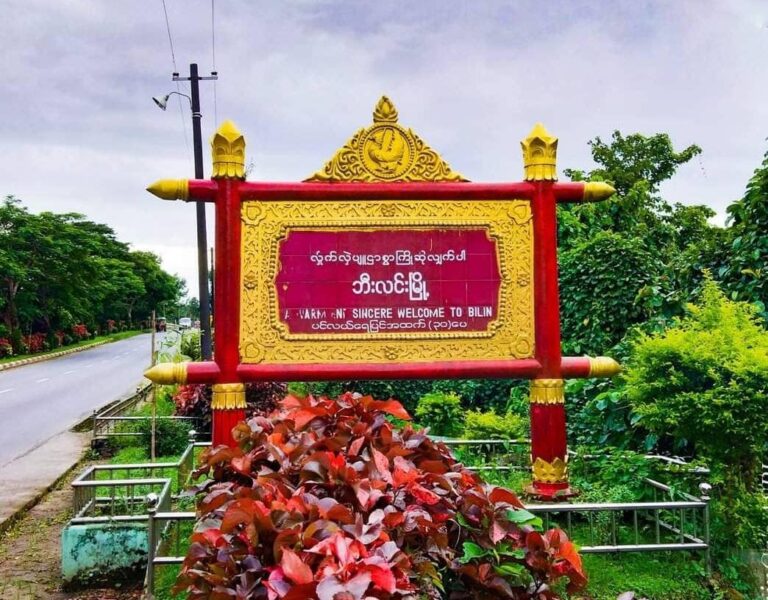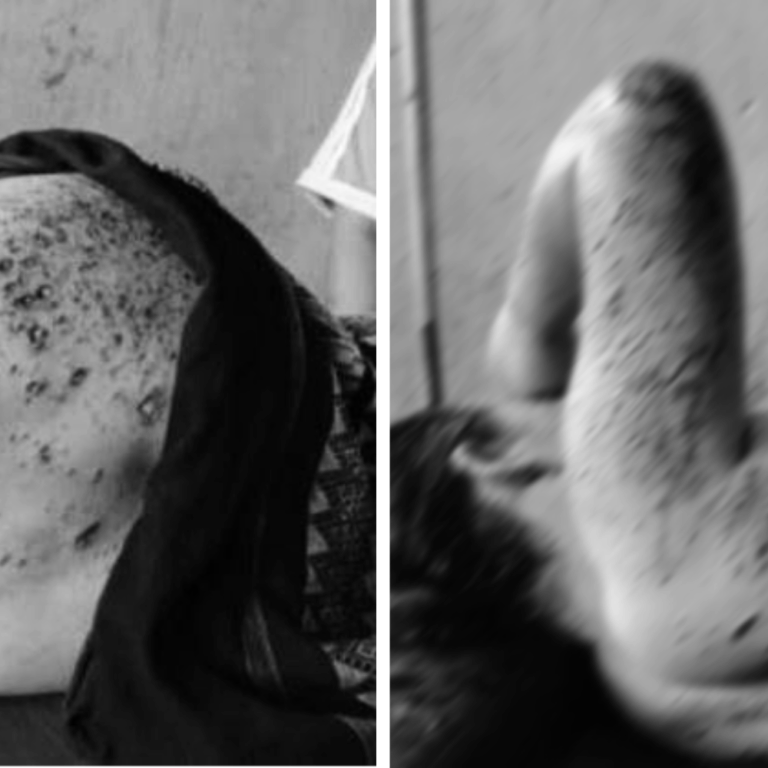W ith the approach of the 2010 election, HURFOM believes that transparency in the Burmese military government’s role in election preparations is necessary. By documenting the actions of Burmese government and its subsidiary groups throughout Mon state, HURFOM hopes to illustrate the deliberate and sweeping role the government plays in safeguarding its own power in the formation of the future “civilian” government.
The Burmese government’s local administrative bodies, the Township Peace and Development Council (TPDC) of Mon State, have increased their surveillance of both monastic communities and civilians in preparation for Burma’s upcoming 2010 election.
The documentation process detailed in this report is carried out by employees of the TPDC, Village Peace and Development Council’s (VPDC), and members of governmental civilian organizations. These government organized and backed associations, include the Myanmar Maternal and Child Welfare Association (MMCWA) and the Union Solidarity and Development Association (USDA). Though described as “civilian welfare” groups, both have been widely documented carrying out military government policy.
These efforts by the Burmese government to prepare for the coming election fall into two categories of documentation, the first focused on numbers and locations of monks in monastic communities and the second targeting the numbers and locations of civilians in villages and towns.
According to the information collected by HURFOM’s field reporters, the Ye Township TPDC has ordered VPDC members to impose stringent security regulations on monks and individuals not from the area, and to document the number of Monks residing in each village. Strict identification checks are being conducted in many villages in Ye Township, such as Kyaungyaw, Lakepoke, Thapinthign, Kaingtow, Gamone, Kyauk Taing, Zawkae, Yawkalay, and Natkyi. HURFOM field reporters indicate that the TPDC’s increased security efforts are intended to disrupt and limit the potential spread of information by monks that might lead to organizing and unrest in rural areas.
A 64 year-old resident of Nat Kyi village tells about his observation of TPDC efforts to document monk activities in his village:
 “In Nat Kyi village, VPDC chairman U Ah Lin and his officers received their orders in a letter from the TPDC in July. Since then he has started to collect the numbers of people in households and monks in temples, and has also asked his villagers and monks to inform him if monks and civilians from other villages come and visit them…If someone miss-informs him they are fined between 30,000 to 50,000 kyat, and he also ordered the abbot not to allow strange monks to live in the temple. But the abbot seems unhappy with the VPDC chairman.”
“In Nat Kyi village, VPDC chairman U Ah Lin and his officers received their orders in a letter from the TPDC in July. Since then he has started to collect the numbers of people in households and monks in temples, and has also asked his villagers and monks to inform him if monks and civilians from other villages come and visit them…If someone miss-informs him they are fined between 30,000 to 50,000 kyat, and he also ordered the abbot not to allow strange monks to live in the temple. But the abbot seems unhappy with the VPDC chairman.”
According to a Ye resident who lives near his local temple, the TPDC in Ye township collected the ID card numbers of every monk in Ye Township. Authorities also documented the number of monks living in each of the Ye Township temples.
TPDC authorities have also visited the Ye Township Sangha Nayaka Committee and collected the original copies of numbers of monks in each monastery. After gathering the numbers recorded with township Sangha Nayaka Committee, local VPDC authorities have been ordered to re-check the numbers in the monks’ own village temples.
According to residents, security has been increased every September since the September 2007 “Saffron Revolution”, in which monks helped lead a popular protest over the removal of gas subsides. The subsequent protests were eventually put down with violence and abductions, from which numerous monks and civilians died or remain missing.
The TPDC restrictions have impacted the travel of monks in the area. As U Ardisa, a monk living in Ye township explained to HURFOM:
“It is very difficult for monks to travel because after the TPDC ordered the VPDC to watch the monks – it seems that all monks are seen as problem makers in the country. Our duty is to spread the Buddhist principles, not to cause problems for the country. The authorities do not respect the rules of Buddhism, and they do not respect religious leaders.”
Individuals who don’t posses an identification card in particular are regarded with suspicion. According to one Ye resident:
“The TPDC is not only collecting identification numbers in the towns but also collecting them in the rural areas. This means authorities are afraid that the monks will demonstrate again…When strangers don’t have identity cards, the immigration authorities won’t allow them to enter Ye town. However, if they can pay 5,000 kyat they can enter the town. [In this way] local authorities are making more money.”
 Civilian populations all over Mon State are also being monitored more heavily. Local authorities are collecting the numbers of residents in each household. These numbers document are sorted in to 3 categories: those over 18 years old, those under 18 years old, and those younger than 10 years of age. Family members working outside of their villages were counted in a separate group.
Civilian populations all over Mon State are also being monitored more heavily. Local authorities are collecting the numbers of residents in each household. These numbers document are sorted in to 3 categories: those over 18 years old, those under 18 years old, and those younger than 10 years of age. Family members working outside of their villages were counted in a separate group.
According to field reporters in Mon State, authorities started these counts in August, and have already completed their household counts in some villages in the Thanbyuzayat, Ye and Kyaikame Sub-townships; these include the villages of Kyaungyaw, Lakepoke, Thapinthign, Kaingtow, Gamone, Kyauk Taing, Zawkae, Yawkalay, and Natkyi, another part of Ye township villages in Sothern part of Ye such as Hangan, Yin Yae, Yin Dan, Kalok, Kawzar, Mi htawhlar Kyi and Mi htawhla Lay.
A Ye resident close to the Mon State TPDC explained to HURFOM that villagers questioning the population counts were told that the census was very important for Burma’s upcoming elections in 2010.
A 54-year-old a resident from Natkyi village, Ye township explains what he has observed regarding election preparations:
“The State Peace and Development Council will do anything to win the elections, and also they want many people in the country to support them. Even in the rural areas they place representatives in the villages.”
According to a high ranking government service official, who asked that HURFOM conceal his name, all the household population numbers collected by local authorities are being sent directly to the Burmese capital of Naypyidaw, because the Burmese government wants to ascertain rural population levels before the 2010 election.
“Authorities separated the number of a household’s population who are in village and who don’t live in the village. I don’t understand why they have to do this,” said young man from Natkyi.
HURFOM field reporters in Mon State report that the TPDC runs nightly checks monitoring homes with overnight guests. Homes with overnight guests are required to inform their ward authorities of their visitors’ presence. Failure to do so incurs a 10,000 to 20,000 kyat fine.
According to Nai Thar* from Anin resident, in his village in Thanbyuzayat township, households with family member working outside of Burma were rigorously questioned regarding their absent family members’ whereabouts. When villagers asked their local VPDC officers to explain why they were so thoroughly questioned, they were told that this information was important for the 2010 Burmese elections.
According a Hangan village resident, when the local authorities came and collected the numbers of household residents, the numbers were very small because most of the youth have gone abroad to work. Unsatisfied with the low residence population numbers, TPDC authorities ordered that migrant workers from upper Burma living in the area be counted as part of the local population.
In Ankhae village, the number of homes is around 800 but the local population is very small since many young men migrate to neighboring countries like Thailand, Malaysia and Singapore. An inside source reported to HURFOM that when the TPDC saw the low numbers of Ankhae’s residential population, they were displeased, and chastised parents for allowing their children to migrate to other countries. The TPDC also rebuked Ankhae’s local VPDC officers.
“We can’t stop them from traveling, and they don’t tell us where they are going! We have no control over it,” an official from Ankhae’s VPDC protested.
Other villages in Mon State besides Ankhae have also suffered from declining household populations. As a means of bolstering rural voter levels, TPDC authorities have recognized migrant workers from upper Burma as village members. According to a Thanbyuzayat resident, large numbers of people have migrated to Mon State from Upper Burma since 2008, lured by the TPDC’s offers of land and homes in their adopted villages; this source also claims that migrant workers are given travel documents, and in situations of conflict with the original residents TPDC authorities take the side of Burmese transplants.
HURFOM hopes to emphasize that these briefly detailed efforts by the SPDC to strengthen its electoral position Mon state represent only a sample of their wider efforts throughout much of Burma. Further efforts must be undertaken to document these issues now as they occur, to illustrate the degree to which the government applies pressure in the supposedly free and fair election, and so that the details of this historical period will not be lost or suppressed after 2010.
*Not his real name



